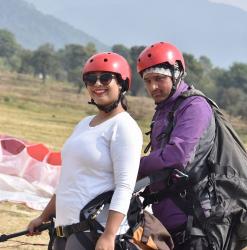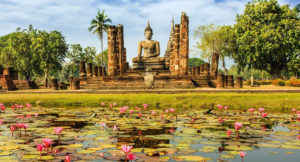Last Updated: July 23, 2018 Nidhi Singh
It is said God is ubiquitous in India, and that is why religion in the country has dimensions to it. Each city, town and village in India has a legend that are mostly connected to God, faith and the mystery of universe. Therefore, India has been a prominent spiritual hub for all those who are keen to surrender themselves to the Supreme Power. Inarguably, India is one of those places wherefrom emerged some of the major religions in the world. Its soil has been blessed with the footprints of many spiritual leaders and the human incarnations of heavenly gods. Wherever the gods of heaven set their foot, spent their days as well as performed miracles became important pilgrim destinations in the country and even today, these places soaked in divinity are highly revered and considered to be haven for those who want to either get their wish fulfilled or seek inner peace and spiritual wisdom. According to a Hindu scripture, there are more than 66 million pilgrims in the world and we can certainly believe that some of them are situated in India.
This blog will take you on a journey to some of these blessed places in India where the divinity will make you believe more in God:
Harsiddhi Mata Temple, Ujjain
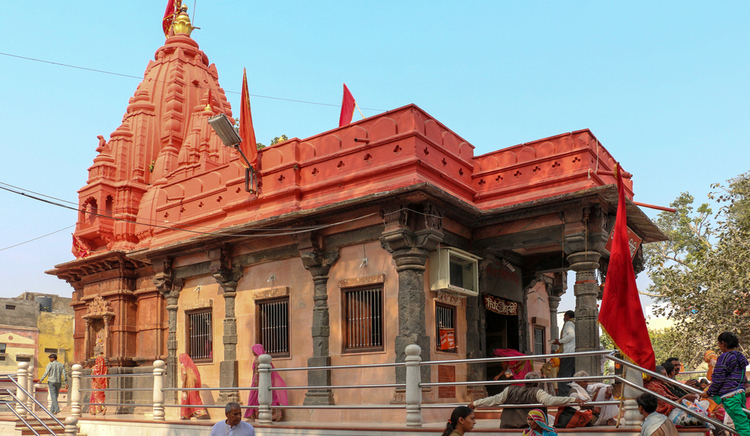
Shri Harsiddhi Temple is one of the ancient places of India and it is the 26th Shaktipeeth among the 52 Shaktipeethas along with being an important temple in Ujjain. The temple is said to be as old as 1st century BC. It is said that the13th fragment in the form of elbow of Mata Sati fell down at this place of Ujjain. Maa Harsiddhi is known and worshipped by 108 names all over India.
According to folklore, Harsiddhi Devi was the clan Goddess of Raja Vikramaditya. The King is said to be such an ardent devotee of the goddess that annually he used to behead himself in front of the deity. Due to the blessing of Ma Harsiddhi, each time the head of the king would attach to body. With the blessing of the goddess, Raja Vikramaditya was a successful and famous king.
The Deep Maalika in front of the temple is said to have been constructed during the reign of Vikramaditya. Even today after worshipping the temple, the tradition of lighting the Deep Maalika is carried out. About 756 Diyas are lit in the Deep Maalika. A team of special appointed people can only lit the Diyas here. It is not an easy task to climb the 61 foot Deep Maalikas without the help of any ladder. According to Shiv Purana with the help of Sri Yantra the worship of Maa Harsiddhi is done in the sanctum sanctorum of the temple. Sri Yanta, literally means Sri meaning Laxmi and Yantra meaning Planets. Behind the temple is an ancient statue of Har Siddhi Devi. It is believed that unmarried girls worship this idol to get their wish fulfilled of marrying a person of their choice. The temple remains open between 5.30AM and 11.30PM.
Gauri Shankar Temple, Delhi

The 800 year old Gauri Shankar Temple is a Hindu temple and is located in Chandni Chowk in Delhi. The Gauri Shankar Temple is dedicated to Lord Shiva and is one of most significant temples of Shaivism. According to history the temple was built by Apa Ganga Dhar, a Maratha soldier who was a devotee of Lord Shiva. He was once severely injured in a battle and chances of his survival were bleak. So, he prayed to Lord Shiva requesting for his life and promised to build a beautiful temple if he survived. In 1959, Seth Jaipura renovated the temple and his name is inscribed over the windows of the temple.The temple has an old brown Lingam (phallus stone) and behind it is kept the deities of Gauri and Shankar with their two sons Ganesh and Kartikeya. On the walls of the temple are the scenes from the life of Shiva and Parvati.
A white marble staircase leads to this temple. On the left side inside the main temple is Shiva’s Trident, Damroo and Nandi. On the right side are the water taps from where devotees can take water to pour over the Shivalinga. In the premises of the temple there are many big and small shrines of other gods and goddesses as well. In the left alley is the temple of Lord Ganesha and opposite is the temple where the deities of Lord Rama, Laxman and Sita are established along with the deity of Lord Hanuman. In the right premises of the temple is the shrine of Laxmi Narayan along with Radha Krishan temple. Amongst these temples, the most important is the temple of Sri Kalki.
Garun Govind, Vrindavan

Photo: https://goo.gl/SQibLs
Situated at a distance of 5kms from Vrindavan is Garun Govind Temple. It is believed that the temple has the power to fulfil all the wishes of the devotees. It is an ancient temple that is attached to many tales of Lord Krishna. In this temple devotees get blessed by the Darshan of Krishna’s friend Sudama Ji in the form of Garuda and Govind Ji.
Amongst several Baal Leelas of Sri Krishna, an important incident took place here. It is said that while playing together at this place, Sri Krishna playfully asked Sudama Ji to become Garun. In this temple, the deity of Sri Govind is of Baraah Bhujadhaari. Next to Govind Ji is Sri Laxmi Ji Vigreh and on the other side is Gopal Ji. It is said that 5000 years ago, the son of Sri Krishna’s son Sri Vajranabh established the idol of Garun Govind here. It is also said that whoever visit the temple gets his wishes fulfilled. According to a popular belief, those getting married give the first invitation to Garun Govind so that there shall be no problems in the wedding.
Neelkanth, Rishikesh

Neelkanth temple is one of the most sacred places of worship for the Hindus. It is located on a hill above Swargashram in Rishikesh and is situated at a altitude of 925 mts. The way to the temple is quite exhilarating. The steep and narrow roads taking above the hill, in which the river is flowing on one side and mountain terrain is on the other side. Road is curvy and narrow with steep slopes as one can expect on any hill station. It’s a drive of 32 kms from Rishikesh via barrage or alternatively one can walk 22 kms via Ram Jhula to get there.
Neelkanth temple is considered to be a apt example of complete natural hill heaven that lies adjacent to mountain ranges of the Nar-Narayan. Because of its beauty and religious importance the devotees and nature lovers visit the place round the year. Neelkanth Mahadev temple is situated at the confluence of the Madhumati and Pankaja rivers, amidst three valleys- Vishnukoot, Brahmakoot and Manikoot.
The centuries old Neelkanth temple in Pauri Garhwal District preserves in itself the celestial aura and the spiritual ambience within itself. It is enriched with legendry anecdotes and mythological stories. The name Neelkanth has been assigned to Lord Shiva and the story behind the name goes as follows.
The Puranas state that during the churning of the ocean- Samundra Manthan, there came out poison. It was so poisonous that it could exterminate mankind. Gods were clueless as to how to destroy it. It was then Lord Shiva took a precarious step and drank the venom to save his devotees. It is said he consumed the poison with this mouth but did not swallow it. He allowed it to remain in his throat which turned his throat blue. Neel defines the color blue, Kanth means throat and Mahadev means Lord of the Gods. It is said that this is the place where Lord Shiva drank the poison. The gods tried hard to placate him and decided to pour water on his head to help him overcome the effect of the poison. That is why devotees pour water even now on the lingam.
Neelkantha Temple is beautiful. The entire story of samudra manthan has been presented on the walls in vivid colors. The inner sanctum is equally beautiful. A life-sized idol of goddess Parvati is seated near the entrance. The arena around the lingam is made of marble. On the columns are etched the minutiae of the Dwarpals (guards) that showed their weapons. Opposite to the lingam is present Lord Shiva’s vehicle, Nandi, the bull. The lingam is encased in silver and has an opening at the top to see the original form.
A gigantic and ancient pipal tree is present at the exit of sanctum. Devotees tie sacred thread on the tree to get their wishes fulfilled. Also, once the wish is answered they revisit the temple to open the tie. Devotees visit Neelkanth Mahadev temple to seek salvation, solitude and peace of mind.
Jeen Mata Dham, Rajasthan

Photo: https://goo.gl/fXqFQP
Jeen Mata also known as the Goddess of Power is presiding over a small town of Raiwasa in Sikar district of Rajasthan. Some 115km from Jaipur, Jeen Mata temple is an important religious place in the state. Jeen Mata is believed to be the incarnation of Maa Durga. The temple of Jeen Mata is one of the Shakti Peeth and believed to have been built thousands of years ago. It is believed that Pandavas during their exile from Hastinapur reconstructed the temple in the present style. The temple of Jeenmata has been repaired and rebuilt several times. A natural grace is lent by the lush vegetation and rich fauna around the temple.
The main hall has pillars that are carved with the patterns of flora and fauna, dancers and deities from bottom to top. It is believed that in the village Ghoghu of Churu, king Ghangh married an apsara on the condition that he would not visit her palace without prior information. King got a son called Harsha and a daughter Jeen. The two children practiced extreme asceticism and with time Jeen gained status of Durga as her incarnation and Harsha as of Bhairon. Jeen Mata is also known as Mahishasura Mardini Durga with eight arms.
Close to Jeen Mata Temple is the shrine of her brother Harsh Bhairav Nath on the top of the hill. The temple attracts a large number of devotees from all over India and around the world. The devotees offer their prayers to Jeen Mata and have her darshan throughout the year.
Sureshwari Devi Mandir, Haridwar
 Sureshwari Devi Temple is an ancident temple in Haridwar. This temple is located at outskirts of Haridwar in Ranipur and to visit this temple permission has to be taken from forest department. Due to its religious significance, it attracts a large number of devotees and since the location is it also attract the nature lover. The devotees strongly believe that this ancient temple is the abode of the Goddess Parvati and has the powers to bring spirituality into the lives of the worshippers. She is also believed to be the one who fulfills all the wishes of her devotees. The temple is ancient and its mention is found in the Skanda Purana.
Sureshwari Devi Temple is an ancident temple in Haridwar. This temple is located at outskirts of Haridwar in Ranipur and to visit this temple permission has to be taken from forest department. Due to its religious significance, it attracts a large number of devotees and since the location is it also attract the nature lover. The devotees strongly believe that this ancient temple is the abode of the Goddess Parvati and has the powers to bring spirituality into the lives of the worshippers. She is also believed to be the one who fulfills all the wishes of her devotees. The temple is ancient and its mention is found in the Skanda Purana.
Defeated by Chandravanshi Rajaraji and expelled from heaven, fearful Indra worshipped Maa Bhagwati here. After which, the Goddess gave Darshan to Indra at the same place. Although every day devotees can be seen worshipping in this temple but on Ashtami, Navmi and Dashmi, a large number of devotees throng the temple, it is also said that even gods of the heaven come to worship Maa Bhagwati here on these days. It is believed visiting the temple of Maa Sureshwari, childless couples are blessed. It is also believed that with the Darshan of the Goddess those with skin diseases and leprosy can also be healed.
Gokarn Dham, Haryana
Gokarn Dham is situated in Rohtak city of Haryana. Like Rohtak is the education centre for the state, in history it had been the land of learning for Sage Gokarn as well. The Srimadbhagwat Purana also has scripture related to this fact. The old name of Rohtak is Rohatash Garh and it has a Siddh Sarovar, on the bank of which Gokarn Rishi practised meditation. It is said due to the meditation of Gokarn Rishi, not only the Sarovar but the entire city earned fame. Today not only people devotees from India but around the world visit Gokarn Dham and take bath in the water of its Sarovar and worship to get their wishes fulfilled. It is said in order to help his brother Dhundhkari attain redemption from the Pret Yoni, Gokarn Rishi practised meditation to please Sun God. It is also said, it was the instruction of the Sun God to Gokarn Rishi to organize Srimadbhagwat Saptah Parayan on the bank of this Sarovar. It is believed that due to the grace of Gokarn Rishi, even today taking the dip in the water of the Sarovar can provide physical and mental healing. In order to keep the Sarovar clean, the water is only filled in the pond during special events and festivals. While performing the circumambulation of the Sarovar, one can stop by the ancient cottage built near it. Close to Sarovar is the famous, Dera Sri Laxman Puri Ji. This dera is responsible for the renovation of the Sarovar. It is believed that visiting this Dera can fulfill all the wishes of a person. Although it is said all kinds of prayers are heard in this Dera, however it has been noticed that often the prayers of the childless couples are answered here. Gokarn Dham is also said to be a place where a Siddh Fakir offered a fruit to a Brahman as a prasad and it is believed due to this Prasad Sage Gokarn was born. That is why along with blessing, the devotees are offered fruits here. This Dera has been the seat of many holy men and it is said whatever good things they said to the devotees here came true. One can see Samadhis of these holy saints in the Dera, where devotees still offer their prayers. According to the history Dera Baba Sri Laxman Puri, the establishment of Dera was done by Siddh Baba Keshav Puri Ji in Multan, Pakistan.
Yamuna Vrindavan, Uttar Pradesh
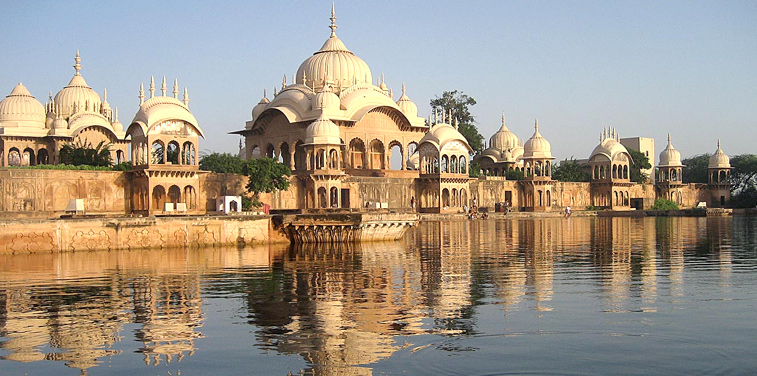 Vrinda meaning Tulsi or Basil is said to be liked a lot by Lord Krishna. It is that said after Vrinda the town of Vrindavan was named. It is said that Radha Ji, the childhood love interest of Lord Krishna is the presiding deity here. It is said Love and Devotion are the two important pillars in Vrindavan. Along with visiting all the places related to the childhood days of Lord Krishna, devotees ensure to visit the holy River Yamuna as well. Called as the heart of Braj, Vrindavan is flanked by Yamuna River from three sides. The calmly flowling river looks as if it is softly yet constantly narrating the stories of Krishna Leela. River Yamuna is one of the holiest rivers in India. According to Varaha Purana, both Ganga and Yamuna rivers offer salvation. Like bathing in Ganga, a dip in Yamuna also helps in cleansing of sin. Yamuna is reckoned to be the daughter of Sun God and the sister of Yamraj. It is also said that whoever bathes in the water of Yamuna on the day of Bhai Dooj, he is free from the fear of death. It is also said that bathing in Yamuna and Darshan, devotees get the blessings from Lord Krishna because it is believe that Yamuna Ji has a close connection with him.According to a legend after the birth Lord Krishna, Vasudev was taking him to Gokul, that time Yamuna Ji started to flow fiercely but as soon as she touched the feet of Krishna, she became calm. All the ghats of Yamuna are related to the Sri Nand Lala’s Leela because since birth, most of the acts of Krishna took place near Yamuna River. On the Kaliah Ghat there is a Kaliadeh temple that is related to the Krishna Leela mystries. It is said to be the place where Lord Krishna killed Kalia Naag. In the temple one can see the Lord Krishna standing over the subdued body of the poisnous Kalia Naag. In the premises of the temple is the age-old Kadamb Tree. It is said that it is the same tree from where Lord Krishna jumped in the River Yamuna to kill Kalia Naag. According to scriptures, Yashodanandan(Krishna) was playing with his friends along the bank of Yamuna. While playing Krishna threw the ball in the water, seeing which his friends asked him to get the ball back, hence, he climbed the Kadamba Tree and from one of its branches made a jump in the water. When he went deep in the water, he found Kalia Naag asleep with his two wives. Seeing Krishna, one of the wives of Kalia Naag warned Krishna to take whatever he was looking for before the Kalia Naag wakes up as he can kill him. Lord Krishna told her that he was there to fight with Kalia Naag and by kicking woke him up. Lord Krishna defeated Kalia Naag but gave him the gift of life later. It is said the major reason of killing Kalia Naag was that his venom was poisoning the water of Yamuna. This incident increased the fame of Yamuna. Another legend of Kadamb Tree is that Amrit Kalash taken by Garuda was placed by him on this tree.
Vrinda meaning Tulsi or Basil is said to be liked a lot by Lord Krishna. It is that said after Vrinda the town of Vrindavan was named. It is said that Radha Ji, the childhood love interest of Lord Krishna is the presiding deity here. It is said Love and Devotion are the two important pillars in Vrindavan. Along with visiting all the places related to the childhood days of Lord Krishna, devotees ensure to visit the holy River Yamuna as well. Called as the heart of Braj, Vrindavan is flanked by Yamuna River from three sides. The calmly flowling river looks as if it is softly yet constantly narrating the stories of Krishna Leela. River Yamuna is one of the holiest rivers in India. According to Varaha Purana, both Ganga and Yamuna rivers offer salvation. Like bathing in Ganga, a dip in Yamuna also helps in cleansing of sin. Yamuna is reckoned to be the daughter of Sun God and the sister of Yamraj. It is also said that whoever bathes in the water of Yamuna on the day of Bhai Dooj, he is free from the fear of death. It is also said that bathing in Yamuna and Darshan, devotees get the blessings from Lord Krishna because it is believe that Yamuna Ji has a close connection with him.According to a legend after the birth Lord Krishna, Vasudev was taking him to Gokul, that time Yamuna Ji started to flow fiercely but as soon as she touched the feet of Krishna, she became calm. All the ghats of Yamuna are related to the Sri Nand Lala’s Leela because since birth, most of the acts of Krishna took place near Yamuna River. On the Kaliah Ghat there is a Kaliadeh temple that is related to the Krishna Leela mystries. It is said to be the place where Lord Krishna killed Kalia Naag. In the temple one can see the Lord Krishna standing over the subdued body of the poisnous Kalia Naag. In the premises of the temple is the age-old Kadamb Tree. It is said that it is the same tree from where Lord Krishna jumped in the River Yamuna to kill Kalia Naag. According to scriptures, Yashodanandan(Krishna) was playing with his friends along the bank of Yamuna. While playing Krishna threw the ball in the water, seeing which his friends asked him to get the ball back, hence, he climbed the Kadamba Tree and from one of its branches made a jump in the water. When he went deep in the water, he found Kalia Naag asleep with his two wives. Seeing Krishna, one of the wives of Kalia Naag warned Krishna to take whatever he was looking for before the Kalia Naag wakes up as he can kill him. Lord Krishna told her that he was there to fight with Kalia Naag and by kicking woke him up. Lord Krishna defeated Kalia Naag but gave him the gift of life later. It is said the major reason of killing Kalia Naag was that his venom was poisoning the water of Yamuna. This incident increased the fame of Yamuna. Another legend of Kadamb Tree is that Amrit Kalash taken by Garuda was placed by him on this tree.
Another Leela of Krishna along the Yamuna was at Cheer Ghat. It is where Lord Krishna in order to teach the lesson to unclothed Gopis who were bathing in Yamuna Ji performe a Leela after which he was give the name of Cheer Bihari. It is also said all the Gopis wished to marry Lord Krishna and in order to get their prayers heard to Katyani Devi, they used to take bath in Yamuna Ji.
Hanuman Temple, New Delhi

Photo: https://goo.gl/eZR8Bk
Hanuman Temple in Connaught Place, New Delhi, is an ancient Hindu temple and is claimed to be one of the five temples of Mahabharata days . The idol in the temple is worshipped as “Sri Hanuman Ji Maharaj”, is that of Bala Hanuman or Hanuman as a child. The temple is said to be 5000 years old and dates back to the time of Pandava. It is said in the Mahabharata days, Pandavas ruled from Indraprastha (Now Delhi) and established 5 temples out of which one is this Hanuman temple.
Another popular story about the establishment of this temple is that Jaipur’s King, Jai Singh used to visit to this place which was once a forest area for hunting. Later, Jai Singh decided to construct a stable over here. It was during the digging here then that a Shila was found here. So, the construction for the stable was ceased and instead a temple was built in its place. Once, this temple was on a mound and thus became popular as ‘Teele Waale Hanuman Ji.’
It is the only temple in the world where Hanuman Ji is facing in the south direction along with it, here only one of the Lord can be seen making it a unique temple. The reason for facing the south direction has to do with Lord Hanuman’s quest for Mata Sita who was abducted by Ravana and taken to Sri Lanka. It is said on his visit to Delhi, Goswami Tulsidas also paid homage to the this Baal Hanuman Swaymbhu. The temple has an unusual feature fixed in the spire (Viman) in the form of a crescent moon (an Islamic symbol) instead of the Hindu symbol of Aum or Sun that is commonly seen in most Hindu temples. It is said Emperor Akbar has established it. This became particularly important during the Mughal period corroborating this extraordinary depiction. In the sanctum sanctorum of the temple, devotees not only worship Lord Hanuman but also go for the Darshan of Ram Darbaar. The temple also have statues of Radha and Krishna. On the left side of the sanctum sanctorum is the statue of Anjani Mata with Baal Hanuman in her arms. Along with deities presiding in the temple, another thing to notice in the temple is its dome where beautiful paintings of Gods and goddess add to the divinity of the place. The statues in the sanctum sanctorum have been offered by the devotees whose wish were fulfilled. The devotees here after the Darshan of Lord Hanuman also pay homage to the Samadhi of Dhyanchand on the right of the Hanuman Darbaar. The visit to Hanuman Temple is divided in three stages, first to pay homage at the deity of Lord Hanuman, second to perform circumambulation of the Hanuman Darbaar and third to spend some time in the premises of the temple.
An important feature of the worship at this temple is the 24–hour chanting of the mantra (hymn) “Sri Ram, Jai Ram, Jai Jai Ram”, since August 1, 1964. It is claimed that this continuous chanting has been recorded in the Guinness Book of World Records.
Biraj Ma Radhe Radhe
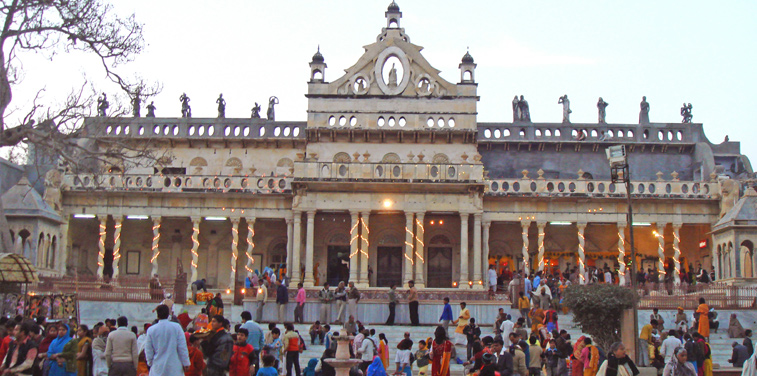 The birthplace and Leelabhoomi of Leela Purushotam Lord Krishna, Braj is a blessed land. The sacred Braj Yatra includes visiting Mathura, Vrindavan, Govardhan, Nandgaon, Gokul and Barsaana. Here devotees are blessed by the Darshan of Lord Krishna and Maa Radha. Visiting Braj not only helps in obtaining ‘Punya’ but the sins of the person are also washed away. It is said that once in the lifetime one should perform pilgrimage and circumambulation of Braj because it provides happiness and prosperity in family and life. According to Varah Purana there are 66 billions pilgrim centres in the world, out of which four are in Braj. That is why Braj is thronged by a large number of devotees all year round. Sleeping on the floor, follwing of Brahmacharya, footwear abstaining, worshipping and Katha Kirtan along with Saatvik Food consumption and sacrificing of worldly needs are the rules of performing pilgrimage in Braj.
The birthplace and Leelabhoomi of Leela Purushotam Lord Krishna, Braj is a blessed land. The sacred Braj Yatra includes visiting Mathura, Vrindavan, Govardhan, Nandgaon, Gokul and Barsaana. Here devotees are blessed by the Darshan of Lord Krishna and Maa Radha. Visiting Braj not only helps in obtaining ‘Punya’ but the sins of the person are also washed away. It is said that once in the lifetime one should perform pilgrimage and circumambulation of Braj because it provides happiness and prosperity in family and life. According to Varah Purana there are 66 billions pilgrim centres in the world, out of which four are in Braj. That is why Braj is thronged by a large number of devotees all year round. Sleeping on the floor, follwing of Brahmacharya, footwear abstaining, worshipping and Katha Kirtan along with Saatvik Food consumption and sacrificing of worldly needs are the rules of performing pilgrimage in Braj.
First the Antargrahi pilgrimage is performed in which all the important religious places of the sacred city are visited. It is said that in order to not to miss out any of the places in Braj, the circumambulation is done. Mathura is the place where Kanha was born. That is why the pilgrimage starts from Mathura. It is the same place where Lord Krishna at the end of Dwaapar Yug was incarnated. It is also the place where Lord Krishna killed Kansa and saved his devotees. Being the witness of many of the Leelas of Lord Krishna, Yamuna Ji still exist and presides over here. Bathing and worshipping in her, devotees attain blessings. Katra Keshavdev is the same place which was once the prison of Kansa and where Lord Krishna was born.
Another important place in Braj is Gokul, which is 6kms away from Mathura. It is where Rohini Ji gave birth to Balram and Lord Krishna killed demons like Putna here.
After Sri Krishna ascended to Gaulok, his son Braj was offered his seat and ever since this region was named Braj Mandal. The Nand Bhavan is an important place in Gokul. It has an area where 84 pillars were built with the blessing of Bhagwan Vishwakarma. Devotees circumambulate around these 84 Pillars and pay homage to Yashodha Maiya, Balram and Lord Krishna. There is an ancient tree here which is known as Paras Tree. It is said the tree is situated in the place where Radha Ji saw the entire universe inside the mouth of Lord Krishna. It is said the tree is the same Kadamb Tree on the branches of which Lord Krishna used to sit and play his flute. Raman Reti is yet another important place in Braj, as it is said it is the place where Lord Krishna played. Thus, devotees today roll in the sand here and pray to the God.
In between Barsaana and Nandgaon is situated Prem Sarovar. It is said to be the place where Lord Krishna and Radha used to have their divine Leelas. It is also where Prem-vaichittya manifested in Radhika and with the tears of Radha this pond was made.
Some 2kms away from Barsaana is Nandgaon. It is said once Nand Baba Krishna left Gokul and inhabited on the hill at Nandgaon. Near Nandgaon is the temple of Osheshwar Mahadev Temple, the legend about this shrine is that on refusing to show Kanha by Yashodha, Lord Shiva got angry and came here to sit.
Vashisht Rishi Temple, Manali

Photo: https://goo.gl/vi6K3S
The land of Manu Rishi, Manali is also the abode of many gods and sages. One of the major religious attractions in Manali is the temple of Vashisht Rishi. The temple is somewhere around 4kms away from Manali and can be reached by trekking or car. It is said that this place is dear to Lord Shiva as well. A large number of devotees throng this temple. The nearby flowing Beas River also add to the charm of this sacred temple. It is said thousands of years ago, the son of Brahma Ji, Vashisht practised medidation here. It is also said due to his meditation the air here has a special fragrance.
Vashisht temple is built in a traditional style with lots of intricate wood carvings. Situated 2050m above the sea level, this temple is said to be around 6000 year old. Amongst the Saptrishi, Vashisht is the most important one. His consort is known as Arundhati Maa. The creator of the world, Brahma handed over two responsibilities to Vashisht. One was to create the world and another to be the priest of Suryanvanshi kings. When Maharshi came to know that Lord Rama would be incarnated in human form in the Suryavansh, he accepted to visit the earth. Maharshi conducted several Yagyas and also advised Bhagirathi as to how to get Ganga Maa on earth. Even Maharaja Dilip was counselled by Vashisht Rishi about Gau Seva that earned him son like Raghu. He even adviced Dashratha to perform Putrakameshti Yagya to get sons like Rama, Laxman, Bharat and Shatrughan. The Darshan of Lord Rama was the main purpose of Vashisht Rishi to come down to earth. Through his many Tap and Yagyas, he lit the lamp of wisdom. In the temple, Vashisht is worshipped in his ancient form Inside it, there is a black stone statue of the Rishi Vashishtha, clad in dhoti,cap and a white shawl on the shoulder. Many pilgrims bathe in the hot spring inside the temple. It is said that this spring has medicinal values.
Sri Vrindavan Dham ki Mahima

Photo: https://goo.gl/pYuzXi
The land of Leela of Lord Krishna, Vrindavan is a sacred place in India. This holy place has been the playing ground for Lord Krishna as he himself along with Seshnaag Avtaari Balram and other mates used to visit for playing and cattle grazing. In Srimadbhagwat and Vishnu Purana, the glory of Vrindavan can be traced. Amongst the Leelas of Krishna include lifting of Govardhan Parvat and shattering the pride of Indra; Ras Leela with Gopis; Killing of Kalia Naag in Yamuna River and hiding the clothes of Gopis on the Kadamb Tree are some of the important ones. Due to the Baal Leelas of Lord Krishna, Vrindavan is considered the heart of Braj. According to scriptures Sudarshandhaari Krishna himself said ‘Vrindavan is my own Dham, that is why everything from birds to human inhabiting are important part of my land and even after the cremation, they all belong to my Dham’. That is why it is the wish of every Krishna devotee that before breathing the last, he want to visit th sacred land of Vrindavan. The trees in Vrindavan are considered as Kalp Taru; the land as mirror and the temples and cattle herd as Chintamani. They are considered as magical and can fulfill wishes of every devotee. If Vrindavan is called as the land of Rasiks, it wouldn’t be incorrect because the king here is Shyamsundar and queen is Radhika Ji.
It is said whenever on earth god incarnated in the form of human on earth, Shakti also accompanied him. Lord Krishna said to Radhika Ji ‘Radhe the way you are presiding over Braj in the form of Sri Radhika, in the same way in Sri Sagar as Sri Mahalaxmi, in Brahmlok as Sri Saraswati and on Mount Kailash as Parvati you are presiding over.’ In the form of Krishna in the land of Vrindavan through unbelievable Leelas, the God is said to have helped his devotees at different times. Happy with the devotion of Swami Haridas Ji, the existence of Lord Krishna in the form of Baanke Bihari is the proof of how much Gods appreciate devotion. In Vrindavan, the praises of Lord Krishna can be heard every now and then. As per the pilgrims here, as soon as one enters the boundary of Vrindavan a queer kind of calmness and happiness takes place in heart.
Saptarishi Ashram, Haridwar
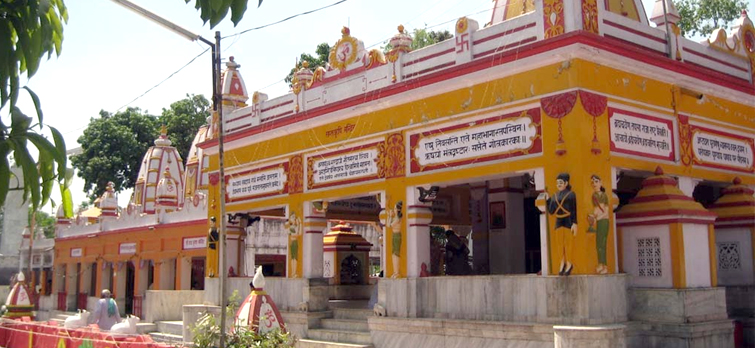 Saptarishi Ashram Haridwar is dedicated to seven sages in Hindu tradition. Sapt Rishis are the ancient sages in Hinduism namely, Kashyapa, Atri, Bharadhvaja, Vishvamitra, Gauthama, Jamadagni and Vashishta. Saptarishi Ashram is located around 5 km from Har Ki Pauri in the holy city of Haridwar. The spot is around 1.5 km from Bhima Goda.
Saptarishi Ashram Haridwar is dedicated to seven sages in Hindu tradition. Sapt Rishis are the ancient sages in Hinduism namely, Kashyapa, Atri, Bharadhvaja, Vishvamitra, Gauthama, Jamadagni and Vashishta. Saptarishi Ashram is located around 5 km from Har Ki Pauri in the holy city of Haridwar. The spot is around 1.5 km from Bhima Goda.
Located near the Saptarishi Ashram is the Saptadhara or Saptasarovar. Legend has it that Saptarishis meditated here and Ganga formed seven streams to cater to the needs of the seven sages. Another nearby sacred spot is the Paramarth Ashram. Also, there are numerous Ghats as River Ganga is only a stone throw away from the Ashram. Across the River lies the periphery of famous Chilla Wildlife Sanctuary.
The Ashram compound houses several temples and small cottages which are rented out to devotees. Sculptors of five Pandava and Panchali are a highlight at Saptarishi Ashram. It is believed that Pandavas passed through the place during their Swargrohan expedition. The current Ashram was built in 1943 and is associated with the Sanatan Dharam Pratinidhi Sabha of Punjab.
Nileshwar Mahadev Mandir, Haridwar
Nileshwar Mahadev Mandir is a famous temple in Haridwar. In this temple, Lord Shiva is present in the form of Shivlinga. It is believed that Lord Shiva drank the poison that was produced during the Amrit Manthan due to which his body turned blue. The mountain on which he consumed the poison is known as Neel Parvat. It is also said that in order to lessen down the effect of the poison, Lord Shiva bathed in the water of Ganga and ever since the colour of the river flowing below the mountain turned blue and was named as Neel Dhara. From the temple another famous temple of Maa Chandi can also be seen. The Kalash on the top of Nileshwar Temple is surrounded by sculptures of snakes. On the right side of the temple is the seat of Mahant Premdas Ji. It is said the rainy season is the favourite of Lord Shiva and that is why a large number of devotees throng the temple during this time of the year. It is said the king of Jammu, Suchet Singh in the 16th century constructed a small temple here. The Shivlinga present in the temple is said to be Swayambhu, meaning originated on its own. It is believed that whoever offers flowers and Akshad here gets to live in the paradise for a long period. It is also said that initially the Shivlinga here was situated under the open air, however, the thronging of devotees and their respect towards it contributed to the construction of this present temple. There is also a cattle shed that is maintained by the temple trust. On every Monday, a large number of devotees throng the temple and not only seek the blessings of Lord Shiva but also enjoy the beauty of natural setting here.
Another legend attached to this temple is that when Lord Shiva was going to marry Sati, the daughter of King Daksha. His Baraat stayed at the same place where the temple is situated. Hence, this temple is also called Gauri Shankar Janvasa Nileshwar Temple. It is also said that after the marriage also, Shiva resided here at this place.
Maya Devi Temple, Haridwar

Photo: https://goo.gl/X3ZT75
Maya Devi Temple is an ancient temple in Haridwar that is counted as one of the Shakti Peethas in India. The temple of Maya Devi has the deity of Adhisthatri. The history of religion in Haridwar speaks of a rather interesting part of Maya Devi Temple. The history of the Maya Devi temple dates back to the 11th century. Among the Hindu community this divine power is very highly regarded and revered.It is believed that the heart and navel of goddess Sati fell in the region where the temple stands today and thus it is referred to as a Shakti Peetha. Goddess Maya is the Adhisthatri deity of Haridwar, she is a three-headed and four-armed goddess who is believed to be an incarnation of Shakti. Therefore, once Haridwar was known as Mayapuri in reverence to this deity. The temple is also a Siddh Peetha which is amongst those places of worship where wishes of the devotees are believed to get fulfilled. It is one of three such Peethas located in Haridwar, the other two being Chandi Devi Temple and Mansa Devi Temple.
Devi Talab Temple, Jalandhar

Photo: https://goo.gl/vZ0nMA
The famous Devi Talab Temple is situated in the heart of Jalandhar city. The temple is dedicated to Goddess Durga and is one of the 51 Shakthi Peethas in India. It is believed that the current temple is more than 200 years old. The image of Lord Shiva that is enshrined here is called Bhisan Bhairav. Devi Talab Temple has been renovated recently and a number of changes have been made to the old structure. Also, a new temple has been constructed within the temple’s premises. Even a model of Amarnath Yatra has been constructed here. Next to the main Devi Talab Mandir, is an old Temple of Goddess Kali. One of the prime attractions of the temple is an old tank, which is considered to be holy by the Hindu devotees.The temple has a structure resembling the Amarnath Cave temple in Jammu and Kashmir. According to Purana, it is the same place where Maa Sati’s right breast fell.
Chamunda Devi Temple, Kangra
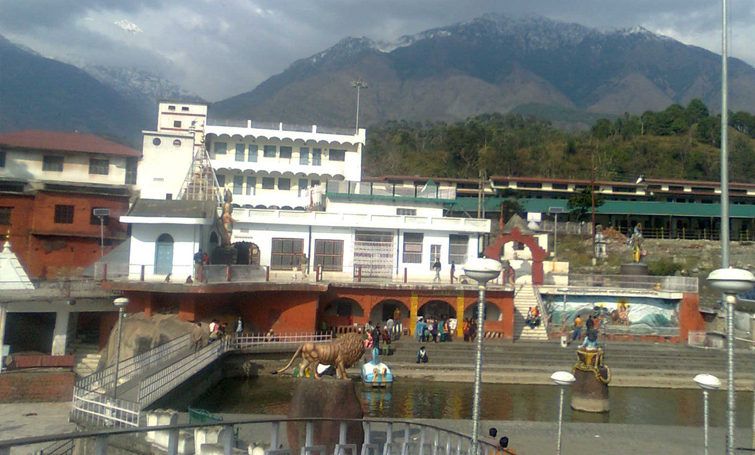 The famous temple of Ma Chamunda is in Kangra district of Himachal Pradesh. Situated some 10kms west of Palampur, on the Baner River, Chamunda Devi is a 400 years old temple. The famous Chamunda Nandikeshwar Dham is an abode of Shiva Shakti since the saga of Puranas. It is said, the king and a Brahmin priest prayed to Devi for permission to move the temple to some easily accessible location. Devi appeared to the priest in a dream giving her consent. She directed him to dig in a certain spot and an ancient idol would be found and that idol should be installed in the temple and worshipped as her form. The king sent out men to bring the idol. Although they were able to locate it but were not able to lift it. Again Devi appeared to the priest in a dream and explained that the men could not lift the holy relic because they considered it an ordinary stone. She instructed him to get up early in the morning, take a bath, wear fresh clothes and go to the place. The priest did as he was told and found that he could easily lift what a large group of men could not. He told the people that it was the power of the Goddess that brought the idol to the temple. The current temple depicts scenes from the Devi Mahatmya, Ramayan and Mahabharata. The Devi’s image is surrounded by the images of Hanuman and Bhairo on either side.
The famous temple of Ma Chamunda is in Kangra district of Himachal Pradesh. Situated some 10kms west of Palampur, on the Baner River, Chamunda Devi is a 400 years old temple. The famous Chamunda Nandikeshwar Dham is an abode of Shiva Shakti since the saga of Puranas. It is said, the king and a Brahmin priest prayed to Devi for permission to move the temple to some easily accessible location. Devi appeared to the priest in a dream giving her consent. She directed him to dig in a certain spot and an ancient idol would be found and that idol should be installed in the temple and worshipped as her form. The king sent out men to bring the idol. Although they were able to locate it but were not able to lift it. Again Devi appeared to the priest in a dream and explained that the men could not lift the holy relic because they considered it an ordinary stone. She instructed him to get up early in the morning, take a bath, wear fresh clothes and go to the place. The priest did as he was told and found that he could easily lift what a large group of men could not. He told the people that it was the power of the Goddess that brought the idol to the temple. The current temple depicts scenes from the Devi Mahatmya, Ramayan and Mahabharata. The Devi’s image is surrounded by the images of Hanuman and Bhairo on either side.
Brajeshwari Devi Temple, Kangra
 The Brajeshwari Devi Temple located is located in theold Kangra Township and is said to have been built over the charred breasts of Sati. This shrine, once renown for its great wealth, has been plundered several times in history. The first of the plunderers was Mahmud Ghazni, who looted it in 1009. A mosque was built on the ruins and a garrison was left behind. After 35 years, the local king regained its possession and the shrine was repaired and a replica of the idol was enshrined. The temple was filled with gold, silver and diamonds only to be looted again in 1360 by Firoz Tughlaq. Later Emperor Akbar visited the shrine with Todar Mal and restored it to its former grandeur. The temple also was harmed during an earthquake in 1905, but a new one came up the very same year, built by Kangra Restoration Committee.
The Brajeshwari Devi Temple located is located in theold Kangra Township and is said to have been built over the charred breasts of Sati. This shrine, once renown for its great wealth, has been plundered several times in history. The first of the plunderers was Mahmud Ghazni, who looted it in 1009. A mosque was built on the ruins and a garrison was left behind. After 35 years, the local king regained its possession and the shrine was repaired and a replica of the idol was enshrined. The temple was filled with gold, silver and diamonds only to be looted again in 1360 by Firoz Tughlaq. Later Emperor Akbar visited the shrine with Todar Mal and restored it to its former grandeur. The temple also was harmed during an earthquake in 1905, but a new one came up the very same year, built by Kangra Restoration Committee.
The main deity of the temple is Brajeshwari Devi or Vajrayogini who is taken into account an incarnation of Goddess Parvati or Aadi-Maya on earth. Her name literally means that “the lady of the Vajra(thunderbolt)”. There are two famous legends regarding the goddess’ origins, both associated with the Vajra. One says that Indra and other gods went to Goddess Parvati and requested her to assist slay the demon Kalikala. Goddess Parvati assured that she would return to their aid at the right time. Another legend says that after Goddess Sati self immolated, Lord Shiva took her body on his shoulder and began Tandav and to prevent him from destroying the earth, Lord Vishnu divided the body of Sati into fifty two parts and the right breast of Sati fell at this spot, so creating it a Shakti Peeth.
It is also believed that Brajeshwari Devi Temple was designed by the Pandavas at the time of Mahabharatha. Legend says that Pandavas saw Goddess Durga in their dream in which she told them that she is located in the Nagarkot Village and if they want to remain safe, they must build a temple for her in this area otherwise they will be destroyed. Thus, the very same night they created an impressive temple for her within the Nagarkot Village.
The temple also have a smal and low roof temple of Bhairav. In front of the main temple is an idol of Dhayanu Bhagat. It is said that Dhayanu had offered his head to the goddess at the time of Akbar. The temple also has 3 tombs in it.
Prashar Rishi Temple, Mandi
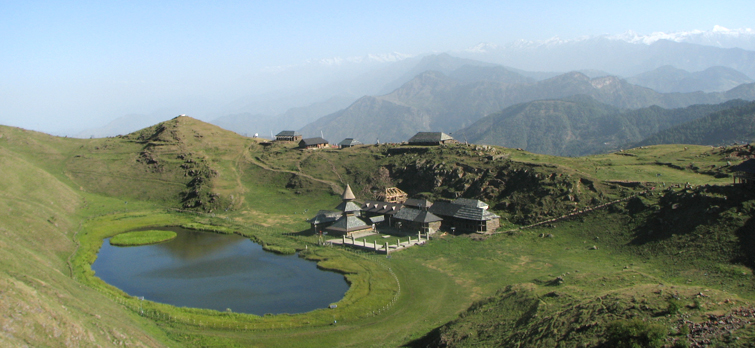 In Mandi district of Himachal Pradesh there is beautiful lake and the Hindu shrine with the name of Prashar. The temple is dedicated to Rishi Parashar who was the grandson of Rishi Vashishta, a great sage in Hindu mythology. The exact history of the Parashar Temple is unknown, but according to folklores, it took around 18 years to complete its construction. The architecture style of the temple reveals that the temple was built in the 14th century. The locals believe that it was commissioned by Ban Sen, the king of Mandi.
In Mandi district of Himachal Pradesh there is beautiful lake and the Hindu shrine with the name of Prashar. The temple is dedicated to Rishi Parashar who was the grandson of Rishi Vashishta, a great sage in Hindu mythology. The exact history of the Parashar Temple is unknown, but according to folklores, it took around 18 years to complete its construction. The architecture style of the temple reveals that the temple was built in the 14th century. The locals believe that it was commissioned by Ban Sen, the king of Mandi.
Prashar Rishi Temple is made of wood in the pagoda style of architecture with intricate carvings of animals and serpents. It is made of deodar wood and has been an important pilgrimage site.
The Parashar Lake is the pride of this pla/ce. It is also an ideal retreat for nature lovers. The legend has it that Rishi Parashar meditated here and this lake came into existence after he struck the ground with a stick from where water flowed.
Salasar Balaji, Rajasthan

Photo: https://goo.gl/BiuzGD
Salasar Balaji or Salasar Dham is a place of religious importance for the devotees of Lord Hanumana. It is located in the town of Salasar near Sujangarh in Churu district, Rajasthan. The sacred temple is located close to the pilgrim centers like Rani Sati and Khatushyamji Temple. The temple of Balaji which is another name of Hanumana is situated in the middle of Salasar and attracts worshippers throughout the year especially on Chaitra Purnima and Ashvin Purnima.
The temple of Salasar Balaji is now considered to be a Shakti Sthal (a place of power) and Swayambhu where miracles and wish fulfillments of the devotees can be witnessed. The idol of Balaji here is different from all other idols of Lord Hanumana. The deity here possess round face with moustache and beard making it the most unique idol among the other idols of Hanumana all over the world.
The initial temple was constructed using mud-stone in 1754 AD by Mohandas Maharaj after being encouraged by the unusual appearance of Balaji in his dreams. The entire circulatory path, the prayer hall and the Sanctum Sanctorum are covered with artistic work of gold and dilver. The vestibule, the doors and the utensils used in worshiping are made of silver. The main gate also has some fine carving works on white marble. The sanctum sanctorum is decorated with floral patterns and other kinds of mosaic works done in gold and dilver to give the temple a rich look.
It is said that on Shravan Shukla-Navami -Samvat 1811, a miracle happened here. A Ginthala-Jat farmer of village Asota found idols of Balaji Lord Hanumana covered with sand while ploughing his fields. This news of the appearance of Lord Balaji spread in the village Asota instantly. In the dream of the Thakur of this region, Balaji ordered him to send the idol to Salasar in the Churu district. The idol was sent to Salasar and consecrated at the place known as Salasar Dham today.
Shirdi
 Shirdi is a popular pilgrimage in India dedicated to holy Sai baba. All around this small town of Maharashtra, the images of Baba can be witnessed. Sri Sai Baba temple in Shirdi is one of its kind. The temple came in to existence in 1923 but the Trust took over the charge in 1983-84. Every devotee who visit the temple has one thing in mind, to take bath and directly pay homage to the Temple of Sai Baba. Phones and shoes are not allowed in the temple of Sai Baba. A special counter has been built, where pilgrims can safely deposit their belonging and without worrying proceed to the shrine.
Shirdi is a popular pilgrimage in India dedicated to holy Sai baba. All around this small town of Maharashtra, the images of Baba can be witnessed. Sri Sai Baba temple in Shirdi is one of its kind. The temple came in to existence in 1923 but the Trust took over the charge in 1983-84. Every devotee who visit the temple has one thing in mind, to take bath and directly pay homage to the Temple of Sai Baba. Phones and shoes are not allowed in the temple of Sai Baba. A special counter has been built, where pilgrims can safely deposit their belonging and without worrying proceed to the shrine.
One century has passed ever since Sai Baba has taken Samadhi but the number of his followers is increasing day by day. The main temple comprises of divine statue of Sai Baba that has been built by Bhau Saahib. In front of Baba is a small image of Nandi. It feels that Baba has taken the form of Lord Shiva and is fulfilling the wishes of his devotees. The seat and the walls behind Baba are made of gold that was offered by the devotees of Baba. On these walls are depicted the scenes from the life of Baba.
Sai Baba spent most of life in a place called Dwarikamai. It is the same place from where Baba gave the message of ‘Sab Ka Maalik Ek’. Dwarikamai has been the witness of the miracles and noble work of Baba for about 60 years. The place where Baba used to seat can also be seen in Dwarikamai. It is said Baba some time used to serve self-cooked meals to people here at the same place. Today this tradition has taken form of Prasadalya. One can still see the stone mill for flour grinding and the flour sack once used by Baba here as well.
At the age of 16, Sai Baba was seen for the first in Shirdi under a Neem Tree. In the south of the tree is a small temple. Baba once admitted this place as the land of his teacher and called it his land as well. It is believed the devotees who light incense here on Thursday and Friday attain a happy life.
Tatya Kote’s mother whose name was Vajayabai was a devotee of Sai Baba. She used to regularly serve meal to Baba. It is believed before breathing his last, Baba gave Vajyabai nine coins. In fact, they were not coins but Nine Fold Paths of Bhakti and Seva: Sarvan, Keertan, Naamsamran, Pathsevan, Archan, Varnan, Dasya, Sakhya and Atmanivedan. It is said; even if one of these is practised then one will surely get the Darshan of Sri Hari.
Worshipping began at Chawdi from 1909. It is said when Baba was scheduled to spend a night Chawdi, devotees from all over the place thronged the place with cradle and chariot. Keeping the tradition alive, today also the cradle is brought till the Chawdi.
Dikshitwada, a short distance from Chawdi is another important place in Shirdi. Built by a devotee of Sai Baba, this place has now been converted in to a museum where things belonging to Baba like footwear, Lota, Chillum, coat, stone mill, chariot, the bed on which Baba took the last bath, utensils in which he used to cook along with several rare pictures.
Dharamshala, Himachal Pradesh

Photo: https://goo.gl/N8kU0t
Dharamshala is located in the scenic valleys of Kangra in Himachal Pradesh. This calm and serene hill station is the place where Lord Shiva is said to reside and so does the great Tibetan leader Dalai Lama along with other Buddhist nuns & monks. On one side of Dharmshala is Dhauladhar Range of Himalayan mountains and on the other side is the fertile land and valley. Dharamashala can be divided in to two parts: lower Dharamshala, where Kotwali Bazaar is located and another Upper Dharamshala, also known as Mcleodganj. The hill station has a dense deodar forest. The snow clad peaks of Dhauladhar Range and the parts of beautiful Chamba can clearly be seen from Dharamshala. In this beautiful town, Buddhism is seen flourishing day by day. People from all over the world visit here to seek peace. The Namgyal Monastery here is an important place for those who follow Buddhism, on the gates of which can be seen the traditional Buddhist signs. Lord Buddha and his life has been depicted in these pictures. Around the Math, Buddhist Monks discussing their religion can be seen. In the porch of the temple, devotees are seen worshipping and meditating in the traditional style. As one walks inside the temple a holy building can be witnessed. On the ground floor of the temple, Lord Buddha is seen sitting in the Bhoomi Sparsh Asana. Buddhist devotees are seen prostrating in front of this idol. Next to this huge image is a small deity of Buddha where he is shown as a skeleton. It is believed in order to attain enlightenment Lord Buddha practised meditation during which his body turned in to skeleton. In the premises of the temple are the rolling prayer wheels on which are written the mantra ‘Om Padam Hum’. It is said due to the chanting of this Mantra and rotating the prayer wheel, evil spirits do not enter the valley. In one side of the temple, a large number of diyas are lit. It is said that evil spirits like darkness whereas light is the sign of good spirits. Dharamshala is the largest centre of Buddhist learning. From around the world, people come here to learn about this religion.
Bhagsu Temple, Himachal

Photo: https://goo.gl/P5fs3D
About a short distance from Namgyal Monastery is the temple of Lord Shiva known as Bhageshwar. The architecture of the temple tells that it is an ancient temple. It is said those who worship here their destiny takes a turn. In the local language, the shrine is called Bhagsu. People from all over India and the world come to visit this temple. Near Shivlinga is the statue of Lord Shiva, also the statues of Nagaraj and Nandi are also erected here. The temple is done in the Kangra style of architecture. In the premises of the temple is situated a Brahma Sarovar. The water source of this Sarovar is the mountain in the Himalaya. Tourism Department has now converted this pond in to a swimming pool. Earlier only Hindu pilgrims bathed in the water of this Sarovar but now the place is open to all. It is the major attraction of Mcleodganj.
Another attraction of Mcleodganj is a waterfall that cascade from lofty Dhauladhar Mountain. For nature lovers this is the major attraction in Macleodganj. The waterfall is also the meditation centre for the people of Buddhist faith. The prayer flags are seen in abundance here.
Masroor Rock Temple, Himachal

Photo: https://goo.gl/zlpHgo
A temple of Lord Ram is yet another attraction in Kangra. Built by cutting the Balua Rocks, the temple is believed to have been erected in the 9th or 10th Century AD. It is a monolith temple whose architecture resembles that of the shrines of Mahabalipuram and Ellora. The temple is one of its kind as it has beautiful rock sculptures and artwork that cannot be seen anywhere else. The main door of the temple is absolutely stunning, they are made of expensive wood and are fine specimen of carving. The sanctum sanctorum of this shrine is made by cutting the rock deep. There are three main deities in the temple: Lord Rama, his consort Seeta and his brother Laxman. Valuable clothes and jewellery has been put on all three deities. In the premises of Masroor temple is the sculpture of an elephant. This image is similar to that can be found in Mahabalipuram. On both sides of the main temple several small temples are also built. On the walls of these temples many sculptures depicting Hindu mythology can be seen.
Baijnath Dham, Himachal

Photo: https://goo.gl/lpEj2B
Somewhere around 16kms from Palampur, amidst the Dhauladhar Range of Mountains is situated the Parampawan Mandir. There are number of legends attached to this temple, amongst which the most important one is of the meditation of Ravana. It is said that happy by the meditation of Ravana, Lord Shiva asked him to ask for one wish, to which Ravana requested Lord Shiva to live with him in Lanka. Lord Shiva gave Ravana a Shivlinga and asked him not to put it down anywhere on the way. However, Ravana could not keep this promise and where is kept this Shivlinga is now the place this temple is situated. It is said Ravana though physically so strong, was unable to move the Shivlinga. Baijnath Dham is the place where the Shivalinga in Palampur is situated. It is a rock-cut temple built in the Nagda style of architecture. The temple was constructed by Raja Sansaar Chand in 1204 AD. This 13th century temple has beautiful carvings on its walls. A large number of devotees throng this sacred shrine.
We hope this blog was able to create a curiosity in your mind to explore at least of these divine places. If you like this blog, please give us a LIKE and SHARE. However, if you think that more places should be added to this list, then please give your suggestion in the comment box below. In case you have decided to visit one of these places but not sure how to go about it, then allow us to help you plan a perfect trip. We at Tour My India offer incredible pilgrimage tour packages at your budget preference. You can give us a call at +91-9212553106/07 or drop an email at info@tourmyindia.com for more on our travel packages in India.
Published: 29 Aug, 2016
From the Lake District, Nainital, Nidhi Singh is a travel writer whose love for mountains can be seen in her write ups. Talk about solo travelling, indulging in adventure activities, binging on good food, planning budget trips or the Aurora Borealis and you will get all her attention. It is the wanderlust that keeps her going and if at all she could get one wish granted she would love to live a life less ordinary. Follow her on Twitter, Facebook & Instagram.


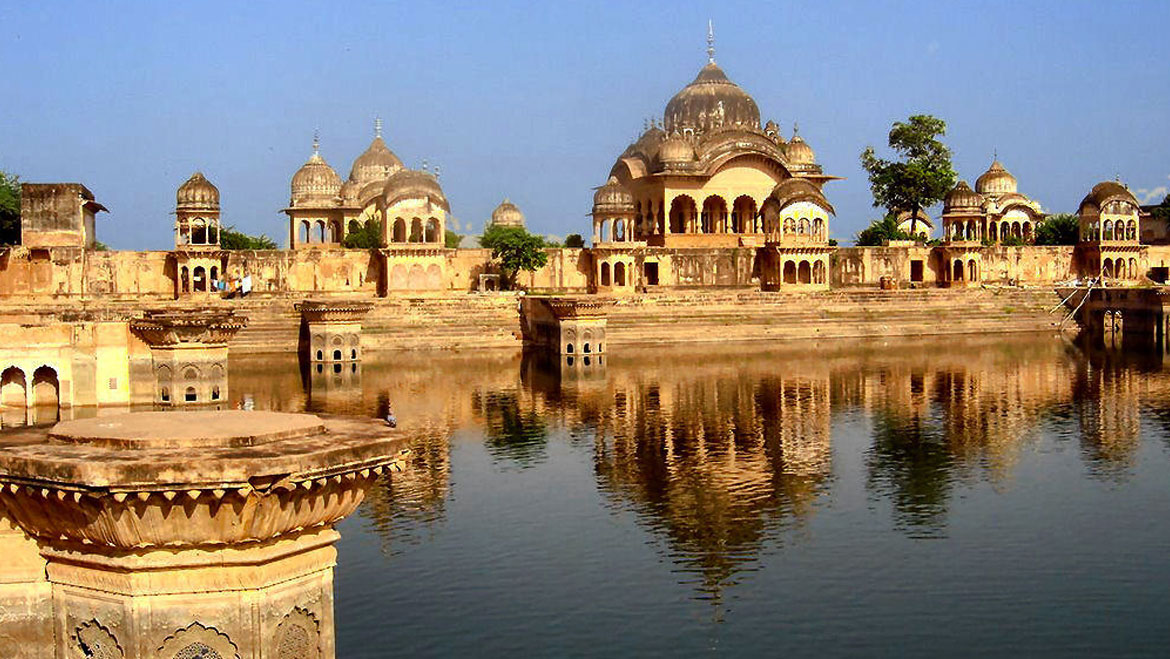
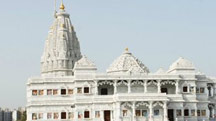 5 Nights / 6 Days
5 Nights / 6 Days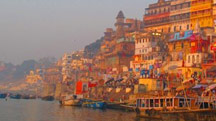 15 Nights / 16 Days
15 Nights / 16 Days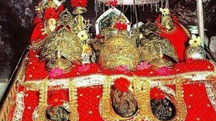 7 Nights / 8 Days
7 Nights / 8 Days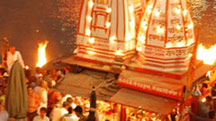 2 Nights / 3 Days
2 Nights / 3 Days




 Sureshwari Devi Temple is an ancident temple in Haridwar. This temple is located at outskirts of Haridwar in Ranipur and to visit this temple permission has to be taken from forest department. Due to its religious significance, it attracts a large number of devotees and since the location is it also attract the nature lover. The devotees strongly believe that this ancient temple is the abode of the Goddess Parvati and has the powers to bring spirituality into the lives of the worshippers. She is also believed to be the one who fulfills all the wishes of her devotees. The temple is ancient and its mention is found in the Skanda Purana.
Sureshwari Devi Temple is an ancident temple in Haridwar. This temple is located at outskirts of Haridwar in Ranipur and to visit this temple permission has to be taken from forest department. Due to its religious significance, it attracts a large number of devotees and since the location is it also attract the nature lover. The devotees strongly believe that this ancient temple is the abode of the Goddess Parvati and has the powers to bring spirituality into the lives of the worshippers. She is also believed to be the one who fulfills all the wishes of her devotees. The temple is ancient and its mention is found in the Skanda Purana. Vrinda meaning Tulsi or Basil is said to be liked a lot by Lord Krishna. It is that said after Vrinda the town of Vrindavan was named. It is said that Radha Ji, the childhood love interest of Lord Krishna is the presiding deity here. It is said Love and Devotion are the two important pillars in Vrindavan. Along with visiting all the places related to the childhood days of Lord Krishna, devotees ensure to visit the holy River Yamuna as well. Called as the heart of Braj, Vrindavan is flanked by Yamuna River from three sides. The calmly flowling river looks as if it is softly yet constantly narrating the stories of Krishna Leela. River Yamuna is one of the holiest rivers in India. According to Varaha Purana, both Ganga and Yamuna rivers offer salvation. Like bathing in Ganga, a dip in Yamuna also helps in cleansing of sin. Yamuna is reckoned to be the daughter of Sun God and the sister of Yamraj. It is also said that whoever bathes in the water of Yamuna on the day of Bhai Dooj, he is free from the fear of death. It is also said that bathing in Yamuna and Darshan, devotees get the blessings from Lord Krishna because it is believe that Yamuna Ji has a close connection with him.According to a legend after the birth Lord Krishna, Vasudev was taking him to Gokul, that time Yamuna Ji started to flow fiercely but as soon as she touched the feet of Krishna, she became calm. All the ghats of Yamuna are related to the Sri Nand Lala’s Leela because since birth, most of the acts of Krishna took place near Yamuna River. On the Kaliah Ghat there is a Kaliadeh temple that is related to the Krishna Leela mystries. It is said to be the place where Lord Krishna killed Kalia Naag. In the temple one can see the Lord Krishna standing over the subdued body of the poisnous Kalia Naag. In the premises of the temple is the age-old Kadamb Tree. It is said that it is the same tree from where Lord Krishna jumped in the River Yamuna to kill Kalia Naag. According to scriptures, Yashodanandan(Krishna) was playing with his friends along the bank of Yamuna. While playing Krishna threw the ball in the water, seeing which his friends asked him to get the ball back, hence, he climbed the Kadamba Tree and from one of its branches made a jump in the water. When he went deep in the water, he found Kalia Naag asleep with his two wives. Seeing Krishna, one of the wives of Kalia Naag warned Krishna to take whatever he was looking for before the Kalia Naag wakes up as he can kill him. Lord Krishna told her that he was there to fight with Kalia Naag and by kicking woke him up. Lord Krishna defeated Kalia Naag but gave him the gift of life later. It is said the major reason of killing Kalia Naag was that his venom was poisoning the water of Yamuna. This incident increased the fame of Yamuna. Another legend of Kadamb Tree is that Amrit Kalash taken by Garuda was placed by him on this tree.
Vrinda meaning Tulsi or Basil is said to be liked a lot by Lord Krishna. It is that said after Vrinda the town of Vrindavan was named. It is said that Radha Ji, the childhood love interest of Lord Krishna is the presiding deity here. It is said Love and Devotion are the two important pillars in Vrindavan. Along with visiting all the places related to the childhood days of Lord Krishna, devotees ensure to visit the holy River Yamuna as well. Called as the heart of Braj, Vrindavan is flanked by Yamuna River from three sides. The calmly flowling river looks as if it is softly yet constantly narrating the stories of Krishna Leela. River Yamuna is one of the holiest rivers in India. According to Varaha Purana, both Ganga and Yamuna rivers offer salvation. Like bathing in Ganga, a dip in Yamuna also helps in cleansing of sin. Yamuna is reckoned to be the daughter of Sun God and the sister of Yamraj. It is also said that whoever bathes in the water of Yamuna on the day of Bhai Dooj, he is free from the fear of death. It is also said that bathing in Yamuna and Darshan, devotees get the blessings from Lord Krishna because it is believe that Yamuna Ji has a close connection with him.According to a legend after the birth Lord Krishna, Vasudev was taking him to Gokul, that time Yamuna Ji started to flow fiercely but as soon as she touched the feet of Krishna, she became calm. All the ghats of Yamuna are related to the Sri Nand Lala’s Leela because since birth, most of the acts of Krishna took place near Yamuna River. On the Kaliah Ghat there is a Kaliadeh temple that is related to the Krishna Leela mystries. It is said to be the place where Lord Krishna killed Kalia Naag. In the temple one can see the Lord Krishna standing over the subdued body of the poisnous Kalia Naag. In the premises of the temple is the age-old Kadamb Tree. It is said that it is the same tree from where Lord Krishna jumped in the River Yamuna to kill Kalia Naag. According to scriptures, Yashodanandan(Krishna) was playing with his friends along the bank of Yamuna. While playing Krishna threw the ball in the water, seeing which his friends asked him to get the ball back, hence, he climbed the Kadamba Tree and from one of its branches made a jump in the water. When he went deep in the water, he found Kalia Naag asleep with his two wives. Seeing Krishna, one of the wives of Kalia Naag warned Krishna to take whatever he was looking for before the Kalia Naag wakes up as he can kill him. Lord Krishna told her that he was there to fight with Kalia Naag and by kicking woke him up. Lord Krishna defeated Kalia Naag but gave him the gift of life later. It is said the major reason of killing Kalia Naag was that his venom was poisoning the water of Yamuna. This incident increased the fame of Yamuna. Another legend of Kadamb Tree is that Amrit Kalash taken by Garuda was placed by him on this tree.
 The birthplace and Leelabhoomi of Leela Purushotam Lord Krishna, Braj is a blessed land. The sacred Braj Yatra includes visiting Mathura, Vrindavan, Govardhan, Nandgaon, Gokul and Barsaana. Here devotees are blessed by the Darshan of Lord Krishna and Maa Radha. Visiting Braj not only helps in obtaining ‘Punya’ but the sins of the person are also washed away. It is said that once in the lifetime one should perform pilgrimage and circumambulation of Braj because it provides happiness and prosperity in family and life. According to Varah Purana there are 66 billions pilgrim centres in the world, out of which four are in Braj. That is why Braj is thronged by a large number of devotees all year round. Sleeping on the floor, follwing of Brahmacharya, footwear abstaining, worshipping and Katha Kirtan along with Saatvik Food consumption and sacrificing of worldly needs are the rules of performing pilgrimage in Braj.
The birthplace and Leelabhoomi of Leela Purushotam Lord Krishna, Braj is a blessed land. The sacred Braj Yatra includes visiting Mathura, Vrindavan, Govardhan, Nandgaon, Gokul and Barsaana. Here devotees are blessed by the Darshan of Lord Krishna and Maa Radha. Visiting Braj not only helps in obtaining ‘Punya’ but the sins of the person are also washed away. It is said that once in the lifetime one should perform pilgrimage and circumambulation of Braj because it provides happiness and prosperity in family and life. According to Varah Purana there are 66 billions pilgrim centres in the world, out of which four are in Braj. That is why Braj is thronged by a large number of devotees all year round. Sleeping on the floor, follwing of Brahmacharya, footwear abstaining, worshipping and Katha Kirtan along with Saatvik Food consumption and sacrificing of worldly needs are the rules of performing pilgrimage in Braj.

 Saptarishi Ashram Haridwar is dedicated to seven sages in Hindu tradition. Sapt Rishis are the ancient sages in Hinduism namely, Kashyapa, Atri, Bharadhvaja, Vishvamitra, Gauthama, Jamadagni and Vashishta. Saptarishi Ashram is located around 5 km from Har Ki Pauri in the holy city of Haridwar. The spot is around 1.5 km from Bhima Goda.
Saptarishi Ashram Haridwar is dedicated to seven sages in Hindu tradition. Sapt Rishis are the ancient sages in Hinduism namely, Kashyapa, Atri, Bharadhvaja, Vishvamitra, Gauthama, Jamadagni and Vashishta. Saptarishi Ashram is located around 5 km from Har Ki Pauri in the holy city of Haridwar. The spot is around 1.5 km from Bhima Goda.

 The famous temple of Ma Chamunda is in Kangra district of Himachal Pradesh. Situated some 10kms west of Palampur, on the Baner River, Chamunda Devi is a 400 years old temple. The famous Chamunda Nandikeshwar Dham is an abode of Shiva Shakti since the saga of Puranas. It is said, the king and a Brahmin priest prayed to Devi for permission to move the temple to some easily accessible location. Devi appeared to the priest in a dream giving her consent. She directed him to dig in a certain spot and an ancient idol would be found and that idol should be installed in the temple and worshipped as her form. The king sent out men to bring the idol. Although they were able to locate it but were not able to lift it. Again Devi appeared to the priest in a dream and explained that the men could not lift the holy relic because they considered it an ordinary stone. She instructed him to get up early in the morning, take a bath, wear fresh clothes and go to the place. The priest did as he was told and found that he could easily lift what a large group of men could not. He told the people that it was the power of the Goddess that brought the idol to the temple. The current temple depicts scenes from the Devi Mahatmya, Ramayan and Mahabharata. The Devi’s image is surrounded by the images of Hanuman and Bhairo on either side.
The famous temple of Ma Chamunda is in Kangra district of Himachal Pradesh. Situated some 10kms west of Palampur, on the Baner River, Chamunda Devi is a 400 years old temple. The famous Chamunda Nandikeshwar Dham is an abode of Shiva Shakti since the saga of Puranas. It is said, the king and a Brahmin priest prayed to Devi for permission to move the temple to some easily accessible location. Devi appeared to the priest in a dream giving her consent. She directed him to dig in a certain spot and an ancient idol would be found and that idol should be installed in the temple and worshipped as her form. The king sent out men to bring the idol. Although they were able to locate it but were not able to lift it. Again Devi appeared to the priest in a dream and explained that the men could not lift the holy relic because they considered it an ordinary stone. She instructed him to get up early in the morning, take a bath, wear fresh clothes and go to the place. The priest did as he was told and found that he could easily lift what a large group of men could not. He told the people that it was the power of the Goddess that brought the idol to the temple. The current temple depicts scenes from the Devi Mahatmya, Ramayan and Mahabharata. The Devi’s image is surrounded by the images of Hanuman and Bhairo on either side. The Brajeshwari Devi Temple located is located in theold Kangra Township and is said to have been built over the charred breasts of Sati. This shrine, once renown for its great wealth, has been plundered several times in history. The first of the plunderers was Mahmud Ghazni, who looted it in 1009. A mosque was built on the ruins and a garrison was left behind. After 35 years, the local king regained its possession and the shrine was repaired and a replica of the idol was enshrined. The temple was filled with gold, silver and diamonds only to be looted again in 1360 by Firoz Tughlaq. Later Emperor Akbar visited the shrine with Todar Mal and restored it to its former grandeur. The temple also was harmed during an earthquake in 1905, but a new one came up the very same year, built by Kangra Restoration Committee.
The Brajeshwari Devi Temple located is located in theold Kangra Township and is said to have been built over the charred breasts of Sati. This shrine, once renown for its great wealth, has been plundered several times in history. The first of the plunderers was Mahmud Ghazni, who looted it in 1009. A mosque was built on the ruins and a garrison was left behind. After 35 years, the local king regained its possession and the shrine was repaired and a replica of the idol was enshrined. The temple was filled with gold, silver and diamonds only to be looted again in 1360 by Firoz Tughlaq. Later Emperor Akbar visited the shrine with Todar Mal and restored it to its former grandeur. The temple also was harmed during an earthquake in 1905, but a new one came up the very same year, built by Kangra Restoration Committee. In Mandi district of Himachal Pradesh there is beautiful lake and the Hindu shrine with the name of Prashar. The temple is dedicated to Rishi Parashar who was the grandson of Rishi Vashishta, a great sage in Hindu mythology. The exact history of the Parashar Temple is unknown, but according to folklores, it took around 18 years to complete its construction. The architecture style of the temple reveals that the temple was built in the 14th century. The locals believe that it was commissioned by Ban Sen, the king of Mandi.
In Mandi district of Himachal Pradesh there is beautiful lake and the Hindu shrine with the name of Prashar. The temple is dedicated to Rishi Parashar who was the grandson of Rishi Vashishta, a great sage in Hindu mythology. The exact history of the Parashar Temple is unknown, but according to folklores, it took around 18 years to complete its construction. The architecture style of the temple reveals that the temple was built in the 14th century. The locals believe that it was commissioned by Ban Sen, the king of Mandi.
 Shirdi is a popular pilgrimage in India dedicated to holy Sai baba. All around this small town of Maharashtra, the images of Baba can be witnessed. Sri Sai Baba temple in Shirdi is one of its kind. The temple came in to existence in 1923 but the Trust took over the charge in 1983-84. Every devotee who visit the temple has one thing in mind, to take bath and directly pay homage to the Temple of Sai Baba. Phones and shoes are not allowed in the temple of Sai Baba. A special counter has been built, where pilgrims can safely deposit their belonging and without worrying proceed to the shrine.
Shirdi is a popular pilgrimage in India dedicated to holy Sai baba. All around this small town of Maharashtra, the images of Baba can be witnessed. Sri Sai Baba temple in Shirdi is one of its kind. The temple came in to existence in 1923 but the Trust took over the charge in 1983-84. Every devotee who visit the temple has one thing in mind, to take bath and directly pay homage to the Temple of Sai Baba. Phones and shoes are not allowed in the temple of Sai Baba. A special counter has been built, where pilgrims can safely deposit their belonging and without worrying proceed to the shrine.



